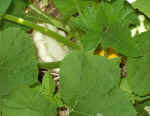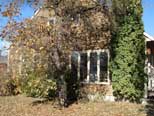Navigation
Resources
Bibliography
Photos
Drawings
Appendix
Journal
Forum
Presentation
Resume
Portfolio
Help
| Final Review
Learning Plan
The following list contains the main references where the original learning goals were mentioned. Then reviews them in a summarized form and gives progress reports in each status portion.
Initial Learning Goals
The initial goals, including learning goals, are documented in several places:
Status
Throughout other portions of this output portfolio additional learning goals are mentioned, for example on the evaluation or review pages at the end of most outputs, which I am not specifically referencing here. Below is a summary of the main learning goals and expectations from across the outputs and an evaluation if and to what extend the goals have been reached. Goals that have not been addressed I will leave out of this list and, if appropriate and still of interest, add in the future learning map:
-
Urban Sustainable Living
One of the main goals for this project is to learn how to create and implement systems of sustainable living in an urban environment by applying ecosocial design to existing residential properties and document the progress.
STATUS:
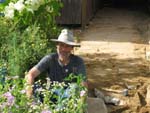 As this is the first year of a multi year plan, this project is just in its beginning. Concentrating mostly on the area of the front yard as the most visible portion to the public, we started with elements and systems that required the most earth movement before building garden beds, planting and other details of the system that will complete the front yard. We actually used more resources this year than in other years due to hiring help that lived with us, need for heavy equipment, transportation of materials and use of machinery powered by electricity and gasoline. As this is the first year of a multi year plan, this project is just in its beginning. Concentrating mostly on the area of the front yard as the most visible portion to the public, we started with elements and systems that required the most earth movement before building garden beds, planting and other details of the system that will complete the front yard. We actually used more resources this year than in other years due to hiring help that lived with us, need for heavy equipment, transportation of materials and use of machinery powered by electricity and gasoline.
As producing more of ones own food is considered to be one of the most effective strategies in reducing resource use and has many other benefits (quality and taste, habitat creation, exercises, increase in self-reliance, etc.) we secondly put some basic infrastructure for food-growing in place. This included increasing the growing area by 100%, working on a porch/greenhouse extension to the house and setting up a protected potting area.
Permaculture principles and the SADIE framework have been used for the design work of the ecological aspects of the project. The financial aspects are monitored by a budget and cash flow plan. During implementation a project plan (see for example design phase project plan and implementation I phase project plan) is used for managing task scheduling, material needs, people and other resources. Several avenues have been taken to integrate the social component into the design. We had a first ever neighborhood meeting, have been answering questions from people passing by, have been giving small tours and have been sharing the ideas behind this project with contractors, helpers as well as with visiting friends and participants of classes.
For monitoring sustainability indicators I set up only one system so far, which is a worksheet called "Utility Usage 2006" that tracks the inflow of electricity, natural gas and water provided by utility companies and the waste leaving the property serviced by the city or city-contractors.
The existing regulatory framework, like the city code and building codes (IRC, IBC), has been influencing some decisions. For example, we decided to use concrete for the sidewalk, due to city requirements and the high cost of alternatives, even though it is not a very sustainable material (see the paragraph "Sidewalk" on the results page of Implementation I). We are able to use clay bricks for a footpath, which was possible as it is not on city property. Due to regulations, we are building an unenclosed South-facing porch instead of an attached greenhouse.
In the this spreadsheet from the appendices information and data is collected about all types of local resources and sustainability related options, including local businesses and professionals, available materials, potential lifestyle choices for greener living, etc.
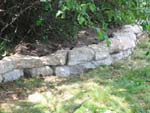 In terms of reducing our use of resources, we are reusing materials from the property to a high degree, instead of buying new materials. For example, the concrete from the old sidewalk was reused to build a footpath (see the paragraph "Foot Path West Side" on the results page of Implementation II), a raised border for a flower bed and as stepping stones, sticks and branches are reused as stakes, dug out material is used for landscaping, etc. Everything else besides some types of plastics and composite materials (the local recycling organization accepts only plastics #1 and #2 at this point), mostly from packaging, is stored for future use or recycled, like old, un-useable nails, screws and other metals. In terms of reducing our use of resources, we are reusing materials from the property to a high degree, instead of buying new materials. For example, the concrete from the old sidewalk was reused to build a footpath (see the paragraph "Foot Path West Side" on the results page of Implementation II), a raised border for a flower bed and as stepping stones, sticks and branches are reused as stakes, dug out material is used for landscaping, etc. Everything else besides some types of plastics and composite materials (the local recycling organization accepts only plastics #1 and #2 at this point), mostly from packaging, is stored for future use or recycled, like old, un-useable nails, screws and other metals.
The re-design for sustainability of our water, energy, transportation and other systems will follow in coming years.
- Connecting to Nature, Health and Personal Development
A sustainable way of living needs also to sustain the soul. Therefore one goal of this project is to lead our life connected to the earth and to provide the space and atmosphere for the sacred and spiritual as well as for joy and personal fulfillment.
STATUS:
We are working with meditation and the Inka Medicine Wheel from a Peruvian tradition. Berta offers classes on our property sharing this ancient practice and wisdom. This tradition connects the spirit to the earth energies as well as to the universe with respect to all of creation. It gives practical tools for bringing balance to the world. Additionally, working on this project brings opportunities for prolonged observations of nature and insights in its miraculous way of functioning.
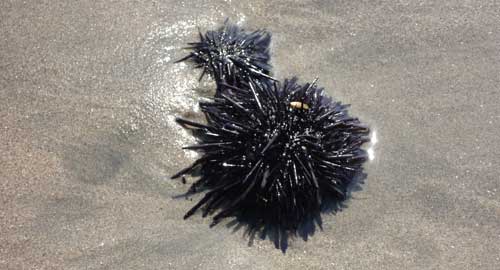
I spent more time outside and did more physical activity than in any of the last 5 years - all due to the nature of the project. We are eating more produce, fruits and berries from our garden. As we are both trained in some healing modalities, we are able to maintain our health to a large degree without visits to doctors' offices. Berta is also a health care practitioner with many years of experience. We use herb and plant medicine when needed.
One significant change for me is to have stopped procrastinating. It started once I realized how much time and work it was going to be for me to produce the outputs. From there it swapped over into other areas of my life - taking care of the daily household chores, arranging appointments, working for my clients, etc. Now it is a matter of prioritizing the important things first. I'd like to get to the point where I am actually ahead of any deadlines and schedule with ease!
I had to deal a few times with extremely tight and overlapping schedules, and, although stretched beyond my comfort level, was able to manage quite well. This included handling differences of opinions on material choices, timing of work or
the flow of implementation parallel to our daily life.
Working and implementing this project strengthened the confidence
in my own abilities. I feel encouraged to transition into a new career practicing integrative ecosocial design professionally. I definitely learned to be quite careful in setting my own schedule and making sure not to pack too much into it.
- Providing for our needs
We want to increase how much we provide for our basic needs including food, fiber, fuel, forage and medicine, water, art and entertainment, transportation, livelihood, learning and social life.
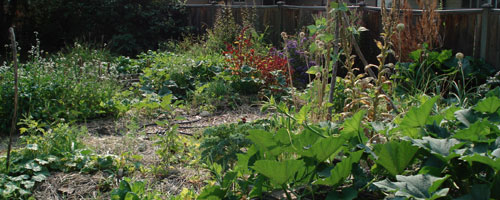
STATUS:
We are just at the beginning and concentrating on producing more of our own food. We have the skills of dealing with many of our health issues (see above), are self-employed working from home and have a good circle of friends, plenty of social activity and participate in several local organizations, like working on the new comprehensive city plan, a climate change group, and the Public Forum on Sustainability.
- Livelihood
We have been self-employed for many years. I have worked in the IS field for many years. When I left the basically only real employment I ever had, I was determined to only pick this skill up again if I could work part time for sustainable and ecological oriented organizations. I also want to start building a new career in the field of ecosocial design.
STATUS:
Shortly after starting this program I had enough IS work in this specialized niche for my day-to-day expenses. The new career building has also started insofar as I had my first consultation and people have been approaching me with projects they want me to work on in the future. Of course finishing this program is one milestone in the effort to making the transition. We are also always looking for 1 or 2 other income projects. I am currently selling books in the area of sustainability through a bookstore and sometimes go to the farmers market selling surplus garden produce.
- Integrating Community and Local Economy
Building community and local economy is part of the social design goals for this project.
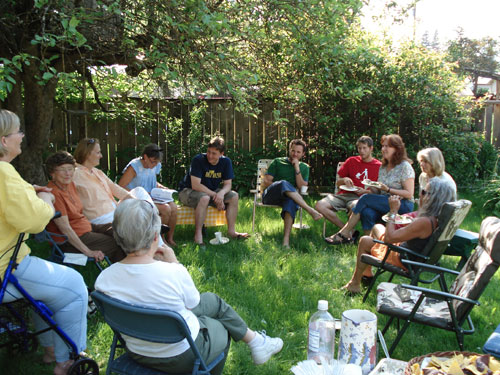
STATUS:
Many people walking by and seeing what we are doing are asking questions. Friends that come by as well as clients and participants at classes want to find out more about this project as well as help. Contractors show an interest in specific materials or methods we are using. In this way, without any specific outreach work, the existence of this project becomes slowly known around town.
We had small and lovely potluck with neighbors the day before we started working in the front yard.
Purchases of materials have been done through locally owned businesses where possible, help was hired locally or were family members.
- Develop Ecosocial Design
Another main purpose of this project is to increase my skill and knowledge in permaculture and ecosocial design.
STATUS:
I have been creating a view drawings and maps. I followed the SADIE design model for this project and creating the outputs. I am using ecological gardening methods, integrating different models, permaculture design principles and looking at the connections and relations between elements. Often I do extensive research to find ecological solutions and keep documenting the design thinking, implementation and results.
- Skills
As an additional yield I wanted to learn new skills or improve existing ones in a variety of areas.
STATUS:
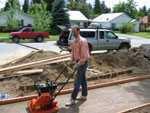 Every year working with our garden increases my skill and the variety of plantings. Due to the work on the sidewalk, driveway and the porch I got familiar with working with concrete, which was quite unexpected. Working on making two footpaths and a retaining wall I learned some basic things about masonry. Every year working with our garden increases my skill and the variety of plantings. Due to the work on the sidewalk, driveway and the porch I got familiar with working with concrete, which was quite unexpected. Working on making two footpaths and a retaining wall I learned some basic things about masonry.
I started to learn to make and read product specifications and technical and architectural drawings (plan, section) due to city requirements. Dealing with contractors and vendors has become comfortable. My understanding of building codes and zoning regulations has increased.
I used several new software programs during the course of this program: SketchUp for 3D modeling (just once), MindManager and FreeMind for mind mapping and learned more about using Adobe Photoshop. Posting the output portfolio on the GEL site I learned additional things how to use Moodle (an E-Learning system).
Of course all the English writing, editing and creating the outputs has helped me to become more proficient in organizing, presenting and composing material in English.
I also learned to use a flat plate compactor, a measuring square, how to do frame work for concrete forms, lay clay bricks, set rebar and build form block walls.
|
